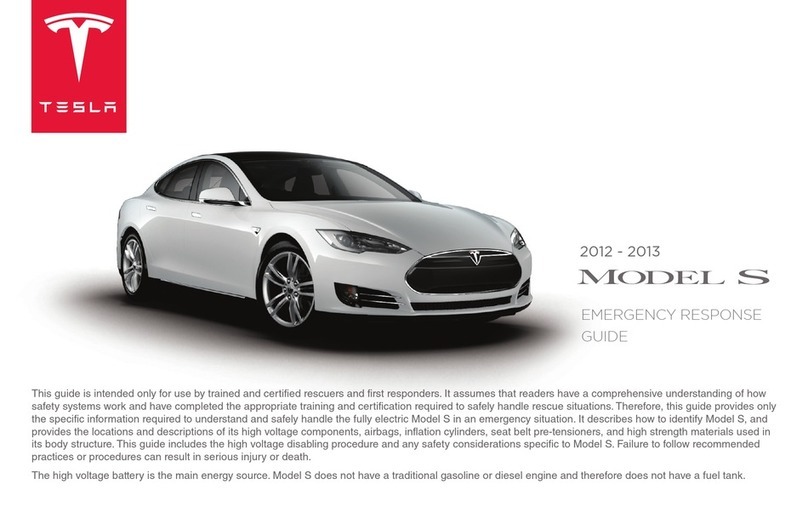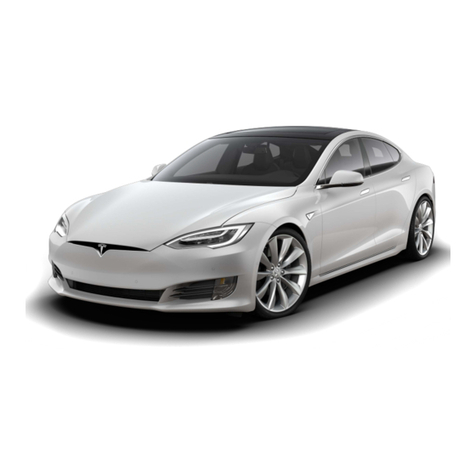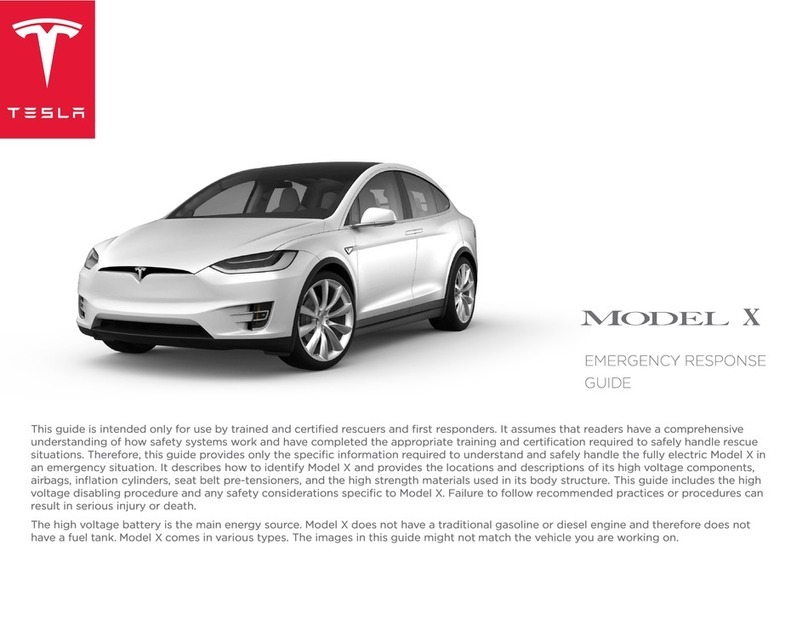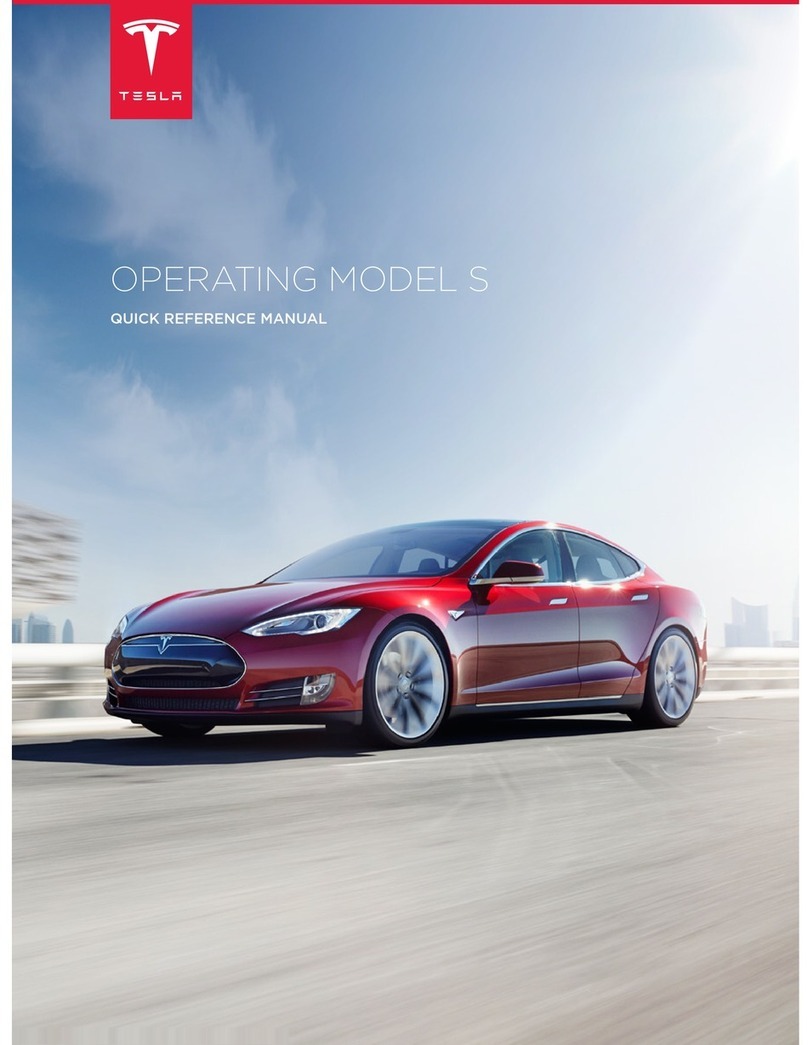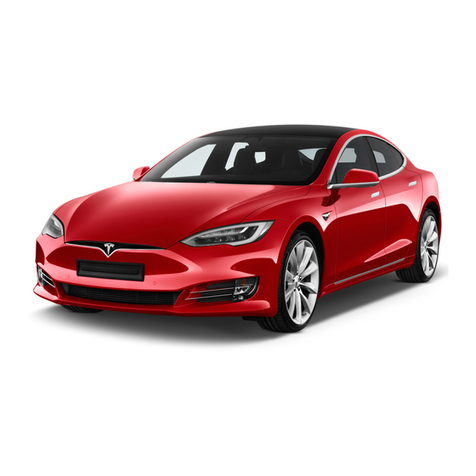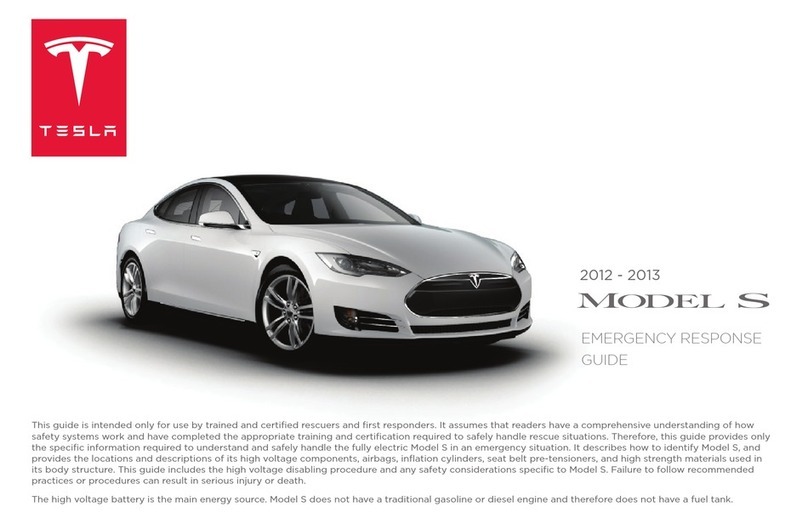
Overview........................................4
Interior Overview....................................................................4
Exterior Overview...................................................................5
Opening and Closing....................6
Doors..................................................................................... 6
KeylessLockingandUnlocking6UsingtheKey6UsingExteriorDoorHandles7UsingInteriorDoorHandles8InteriorLockingandUnlocking8Child-protectionLocks8Drive-awayLocking8Walk-awayLocking8UnlockingWhentheKeyDoesn'tWork9OpeningInteriorDoorswithNoPower9 Windows.............................................................................. 10
OpeningfromtheExterior10OpeningandClosingfromtheInterior10LockingRearWindows10 Rear Trunk........................................................................... 11
Opening11Closing11AdjustingtheOpeningHeight11InteriorRelease12OpeningwithNoPower12 Front Trunk.......................................................................... 13
Opening13Closing13InteriorEmergencyRelease14OpeningwithNoPower14 Glove Box............................................................................ 15
OpeningandClosing15 Sunroof................................................................................ 16
OpeningandClosing16 Cup Holders......................................................................... 17
OpeningandClosing17
Seating and Safety Restraints... 18
Front and Rear Seats...........................................................18
CorrectDrivingPosition18AdjustingtheDriver’sSeat18FoldingRearSeats18RaisingRearSeats19HeadSupports19SeatCovers19 Seat Belts.............................................................................20
WearingSeatBelts20WearingSeatBeltsWhenPregnant20SeatBeltPre-tensioners21TestingSeatBelts21SeatBeltWarnings22 Child Safety Seats............................................................... 23
GuidelinesforSeatingChildren23ChoosingaChildSafetySeat23SeatingLargerChildren25InstallingChildSafetySeats25InstallingSeatBeltRetainedChildSeats25InstallingISOFIXChildSeats26AttachingUpperTetherStraps27TestingaChildSafetySeat27Warnings-ChildSafetySeats27 Tesla Built-In Rear Facing Child Seats................................ 27
UsageRestrictions27Opening28Folding28SeatingaChild30Warnings-TeslaChildSeats31 Airbags.................................................................................32
LocationofAirbags32HowtheAirbagsWork33TypesofAirbags33DisablingtheFrontPassengerAirbag34InflationEffects35AirbagWarningIndicator35AirbagWarnings35
Driving..........................................36
Driver Profiles...................................................................... 36
CreatingaDriverProfile36RestoringaDriver’sProfile36SavedDriverSettings36 Steering Wheel.................................................................... 37
AdjustingPosition37AdjustingSensitivity37UsingLeftSteeringWheelButtons37UsingRightSteeringWheelButtons38Horn38 Mirrors..................................................................................39
AdjustingExteriorSideMirrors39RearViewMirror39 Starting and Powering Off....................................................40
StartingModelS40PoweringOff40 Gears................................................................................... 41
ShiftingGears41LeavingModelSinNeutral-TowMode41 Instrument Panel..................................................................42
InstrumentPanelOverview42IndicatorLights43 Lights................................................................................... 47
ControllingLights47HeadlightHighBeams49HeadlightsAfterExit49CorneringLights49TurnSignals50HazardWarningFlashers50 Wipers and Washers............................................................51
Wipers51Washers51 Park Assist........................................................................... 52
HowParkAssistWorks52VisualandAudioFeedback52ControllingAudibleFeedback52LimitationsandFalseWarnings52OtherParkingAids53 Trip Information....................................................................54
DisplayingTripInformation54 Getting Maximum Range..................................................... 55
DrivingTipstoMaximizeRange55SavingEnergy55 Brakes..................................................................................56
BrakingSystems56BrakeWear56RegenerativeBraking57ParkingBrake57 Traction Control................................................................... 58
HowItWorks58 Cruise Control...................................................................... 59
OperatingCruiseControl59ChangingtheCruisingSpeed59CancelingandResuming59 Hill Start Assist.....................................................................59
Rear View Camera...............................................................61
CameraLocation61
Using the Touchscreen.............. 62
Touchscreen Overview........................................................ 62
TheBigPicture62 Controls................................................................................64
ControllingModelSFeatures64 Settings................................................................................ 66
CustomizingModelS66 Climate Controls.................................................................. 68
OverviewofClimateControls68CustomizingClimateControl69Ventilation70ClimateControlOperatingTips70 Smart Air Suspension.......................................................... 71
ManualHeightAdjustments71AutomaticHeightAdjustments71JackMode71 Media and Audio.................................................................. 72
Overview72AMandFMRadioServices72DABRadioServices72InternetRadio73MediaSettings73Favorites74MyMusic&Devices74USBConnections7512VPowerSocket75 Phone...................................................................................76
Bluetooth®Compatibility76PairingaBluetooth®Phone76ImportingContacts76UnpairingaBluetooth®Phone76ConnectingtoaPairedPhone77MakingaPhoneCall77ReceivingaPhoneCall77InCallOptions77UsingVoiceCommands77 Maps and Navigation........................................................... 78
Overview78UsingMaps78StartingNavigation78DuringNavigation78 Security Settings.................................................................. 79
AbouttheSecuritySystem79 HomeLink®Universal Transceiver....................................... 80
AboutHomeLink®80ProgrammingHomeLink®80
Connecting to Wi-Fi............................................................. 81
Software Updates................................................................ 82
LoadingNewSoftware82ViewingReleaseNotes82 Mobile App........................................................................... 83
ModelSMobileApp83
Charging...................................... 84
Electric Vehicle Components...............................................84
HighVoltageComponents84MobileChargingEquipment85HighPowerWallConnector85 Battery Information...............................................................86
AbouttheBattery86BatteryCare86 Charging Model S................................................................ 87
OpeningtheChargePort87PluggingIn87DuringCharging88StoppingCharging88ChargePortLight88ChangingChargeSettings89ChargingStatus90
Maintenance................................ 91
Maintenance Schedule........................................................ 91
ServiceIntervals91DailyChecks91MonthlyChecks91FluidReplacementIntervals91HighVoltageSafety91 Tire Care and Maintenance................................................. 92
MaintainingTirePressures92InspectingandMaintainingTires93ReplacingTiresandWheels94UsingTireChains95TirePressureMonitoring95 Temporary Tire Repair.........................................................97
TireRepairKit97InflatingwithSealantandAir98InflatingwithAirOnly99ReplacingtheSealantCanister100 Cleaning.............................................................................101
CleaningtheExterior101CleaningtheInterior102Polishing,TouchUp,andBodyRepair103UsingaCarCover103FloorMats103 Wiper Blades and Washer Jets..........................................104
CheckingandReplacingWiperBlades104CleaningWasherJets104 Fluid Reservoirs................................................................. 105
RemovingtheMaintenancePanel105CheckingBatteryCoolant105CheckingBrakeFluid106ToppingUpWasherFluid107 Fuses................................................................................. 108
FuseBoxLocations108ReplacingaFuse108FuseBox1109FuseBox2110FuseBox3112FuseBox4112 Jacking and Lifting............................................................. 114
JackingProcedure114 Parts and Accessories....................................................... 115
Parts,Accessories,andModifications115BodyRepairs115
Specifications............................116
Identification Labels........................................................... 116
VehicleIdentificationNumber116 Vehicle Loading................................................................. 117
LoadCapacityLabeling117CalculatingLoadLimits118TowingaTrailer118 Dimensions and Weights................................................... 119
ExteriorDimensions119Weights120 Subsystems....................................................................... 121
Motor121Transmission121Steering121Brakes121Suspension122Battery-12V122Battery-HighVoltage122 Wheels and Tires............................................................... 123
WheelSpecifications123WheelAlignmentValues123TireSpecifications124UnderstandingTireMarkings125
Roadside Assistance................127
About Roadside Assistance...............................................127
ContactingRoadsideAssistance127RegionalRoadsideAssistanceNumbers127 Instructions for Transporters.............................................. 129
UseaFlatbedOnly129DisableSelf-Leveling(airsuspensionvehiclesonly)129ActivateTowMode129ConnecttheTowChain130PullOntotheTrailerandSecuretheWheels131
Consumer Information............. 132
Disclaimers........................................................................ 132
VehicleTelematics/DataRecorders132QualityControl132AboutthisOwnerInformation132 Reporting Concerns........................................................... 134
ContactingTesla134 Declarations of Conformity.................................................135
KeyandPassiveUnlockingSystem135TirePressureMonitoringSystem135HomeLink135RadioFrequencyInformation135
Contents

